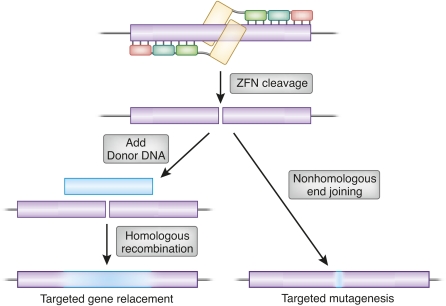Figure 2 .
Repair outcomes of a genomic double-strand break, illustrated for the case of ZFN cleavage. A pair of three-finger ZFNs is shown at the top in association with a target gene (open box). If a homologous donor DNA is provided (solid box, left), repair can proceed by homologous recombination using the donor as template. The amount of donor sequence ultimately incorporated will typically decline with distance from the original break, as illustrated by the shading. Alternatively, the break can be repaired by nonhomologous end joining, leading to mutations at the cleavage site. These may be deletions, insertions, and base substitutions, usually quite localized, but sometimes extending away from the break.

